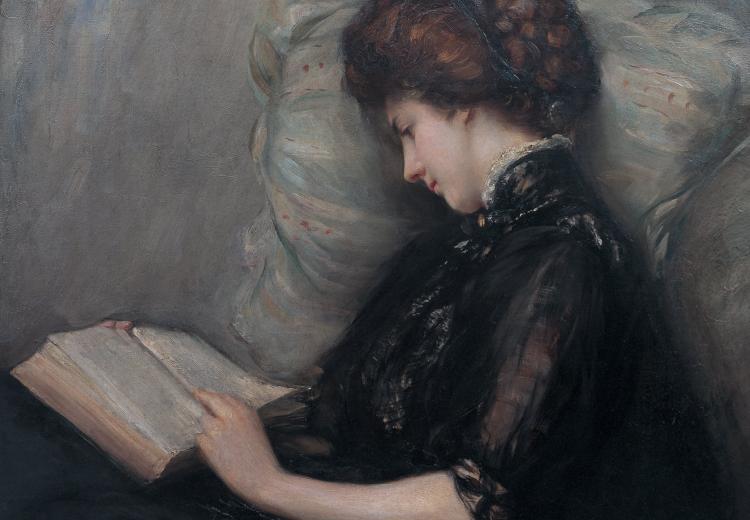Introduction to Modernist Poetry

"Lady Reading Poetry" by Ishibashi Kazunori (1906).
"The English novelist Virginia Woolf declared that human nature underwent a fundamental change "on or about December 1910." The statement testifies to the modern writer's fervent desire to break with the past, rejecting literary traditions that seemed outmoded and diction that seemed too genteel to suit an era of technological breakthroughs and global violence."
—Academy of American Poets, “The Modernist Revolution: Make It New”
Understanding the context of literary modernism (specifically, modernist poetry) is important for students before they analyze modernist texts themselves. To that end, this three-lesson curriculum unit begins with Lesson One: “Understanding the Context of Modernism Poetry,” followed by Lesson Two: “Thirteen Ways of Looking at a Blackbird,” which features “warm-up” exercises to give students initial bearings for reading and analyzing modernist poetry. The curriculum unit ends with T.S. Eliot’s “The Love Song of J. Alfred Prufrock”; this lesson requires students to analyze modernist poetry in more depth and detail. You may extend the unit by teaching additional modernist poets such as Marianne Moore, Jean Toomer, William Carlos Williams, and Ezra Pound.
Guiding Questions
What historical, social, and cultural forces prompted the modernist movement?
What distinguishes modernist poetry from other forms of poetry?
What effect has modernist poetry had on literary and popular culture?
Learning Objectives
Examine the literary context of modernism and its significance at the time.
Analyze modernist poetry to identify distinguishing poetic devices.
Interpret modernist poems to inform understanding of form, tone, purpose, and meaning.
Analyze the historical, social, and cultural context of modernism and its significance beyond that era.
